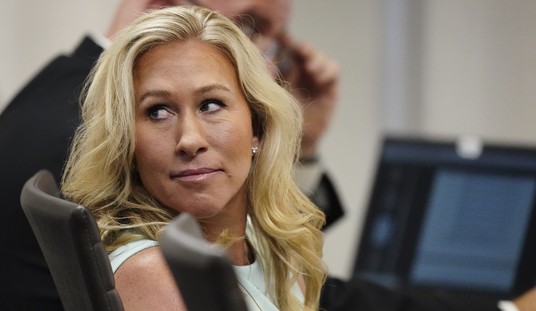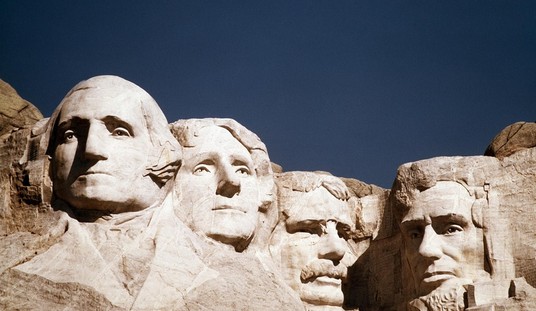Forget the trillion-dollar deficits for a moment. Forget today’s $15 trillion in national debt. The real fiscal disaster isn’t our present — it’s our future, and it just got significantly worse. Bloomberg economists Laurence Kotlikoff and Scott Burns report that our “fiscal gap,” the measure of future liabilities to future revenue, grew by the same amount as our present public debt to reach $222 trillion. That’s trillion with a T:
Republicans and Democrats spent last summer battling how best to save $2.1 trillion over the next decade. They are spending this summer battling how best to not save $2.1 trillion over the next decade.
In the course of that year, the U.S. government’s fiscal gap — the true measure of the nation’s indebtedness — rose by $11 trillion.
The fiscal gap is the present value difference between projected future spending and revenue. It captures all government liabilities, whether they are official obligations to service Treasury bonds or unofficial commitments, such as paying for food stamps or buying drones. …
The U.S. fiscal gap, calculated (by us) using the Congressional Budget Office’s realistic long-term budget forecast — the Alternative Fiscal Scenario — is now $222 trillion. Last year, it was $211 trillion. The $11 trillion difference — this year’s true federal deficit — is 10 times larger than the official deficit and roughly as large as the entire stock of official debt in public hands.
What is the main driver of this fiscal gap? Mainly, it’s the entitlement liabilities that we have been multiplying for the last eighty years. When 78 million Americans in the Baby Boomer generation retire, the resulting liabilities will take a whopping 85% of per-capita GDP to satisfy. Trillion-dollar deficits are unsustainable; this is flat-out unattainable. There is simply no way that the US can or will meet those obligations, even if we have another population boom, which seems unlikely. It’s practically the textbook definition of an empty promise.
Kotlikoff and Burns give an idea of the scope needed in policy changes now to eliminate the fiscal gap. Either we have to immediately increase federal taxes by 64% (and that number goes up for every year we delay), immediately cut liabilities by 40% across the board (including entitlement benefits being paid now), or use a mix of both approaches to reach financial equilibrium. And that’s what we have to do just to stop further growth in our current national debt, let alone start paying it down.
We’ve been talking about the “fiscal cliff” or “Taxmageddon” coming at the end of the year, but this is the real fiscal cliff we face. And yet, no one in this general-election cycle has even acknowledged it, let alone proposed a solution to it. In my column today for The Fiscal Times, I wonder when either political party will focus on the forest rather than the trees, or (more often) the mud at the base of the trees:
The biggest problems, though, are the candidates and the political parties themselves. The issues that voters want to discuss are broad, complicated, and far-reaching. So far, though, the response from both sides only nibbles at well-chewed edges of the core issues, with no one seemingly capable of framing a larger debate over the vision for America’s economy for the next several decades. One side talks about tax burdens, the other about fairness, and so far neither has given voters a comprehensive plan for solving this interlocking puzzle. …
Taxes at the federal level are designed to produce the income necessary for the mission of the US government. Spending directly relates to the mission. We need to know the scope and size of the mission before we can determine spending and the appropriate level of taxation. Do we want the federal government to have plenary jurisdiction in all areas of our lives, where it dictates personal choices and overrides religious objections in the name of the greater good? We have been traveling along those lines for decades, but still provide funding for only about 60 percent of the annual costs for such a mission. Do we want a federal government that only absorbs 20 percent of GDP? Then we need to rest the mission to keep the costs within those boundaries.
What has been missing from the political campaign this year, and truly every cycle since Ronald Reagan’s midterm election, is an honest debate over the mission and resources of the federal government and its component parts. That is almost certainly by design, since most politicians would be afraid to stand on a comprehensive platform that would immediately alienate a large section of the electorate. Instead, politicians will tell voters that we don’t need to make tough choices, and end up kicking the can down the road. Unfortunately, we’re running out of road, and we’re almost at the dead end. Voters want to know how the candidates proposing turning around, and instead, both sides are arguing about the size of the curbs.
This election should be about competing visions for the future of America, with solid policy supporting each vision. We just don’t have enough elections between now and when this crisis will hit to waste one.







Join the conversation as a VIP Member